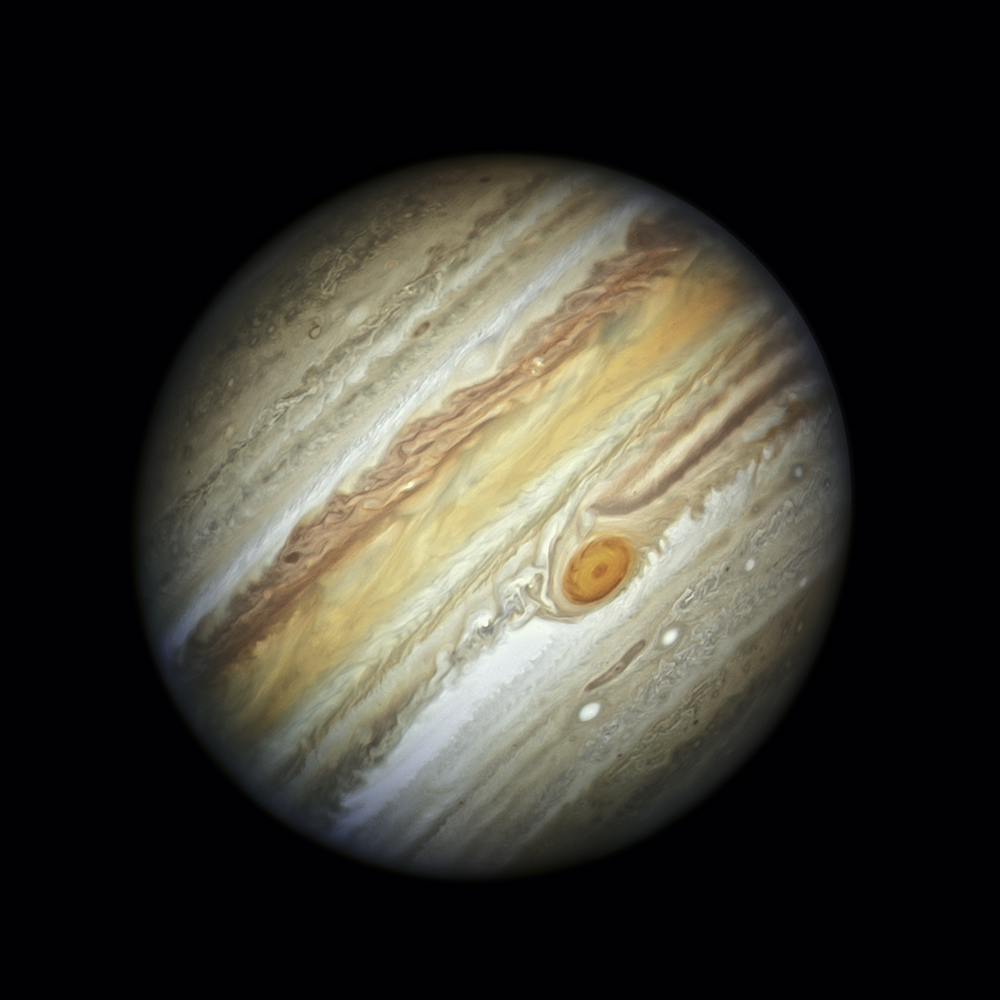Coffee & Viz: Meteorological Modeling of Jupiter's Great Red Spot
Friday, September 16, 2022
9:30am to 10:30am
This event is part of the Coffee and Viz event series.
This event has concluded.

When
Friday, September 16, 20229:30am to 10:30am
Where
Teaching and Visualization Lab, Hunt LibraryAbout This Event
Jupiter's Great Red Spot (GRS) is the oldest and largest discrete meteorological phenomenon known to exist in the solar system. A deep red anticyclone with winds exceeding 400 mph, the storm has been brewing in Jupiter's Southern Hemisphere for over 150 years. At its peak in the late 1800s, Earths could fit inside the Great Red Spot more than four times.
However, it has been getting smaller ever since; today, it's half the size it was 150 year ago! The meteorology behind the storm's shrinking is not well understood. In this talk, Caleb Keaveney and Gary Lackmann use spacecraft imagery and data visualization to discuss their work using weather modeling to understand the Great Red Spot and its evolution.
About the speakers:
Caleb Keaveney is a senior undergraduate student at NC State studying meteorology and applied mathematics. A Goldwater Scholar, Astronaut Scholar, and a recipient of the NC Space Grant, Caleb is an accomplished undergraduate researcher interested in planetary meteorology. He has spent two summers as a research fellow for the Juno mission at NASA's Jet Propulsion Laboratory (JPL), advancing ground-breaking research on Jupiter's high-altitude clouds and hazes with an international team of collaborators at NASA, the European Space Agency, and in the amateur astronomy community. In that role, he became a leading expert on JunoCam imagery and its scientific applications. Caleb has been involved with planetary science research at NC State since he was a freshman, most recently in collaboration with Gary Lackmann modeling Jupiter's Great Red Spot.
Dr. Gary Lackmann is a professor at North Carolina State University. His research focuses on high-impact synoptic, mesoscale, and tropical weather systems, and how these systems are affected by climate change. Gary earned B.S. and M.S. degrees from the University of Washington and a Ph.D. from SUNY Albany. Professional appointments include NOAA/PMEL, the Naval Postgraduate School, McGill University, and SUNY Brockport. Gary currently serves as Editor-in-Chief of the American Meteorological Society (AMS) journal Weather and Forecasting. He has been honored with the NC State Outstanding Teacher Award, and the AMS Edward N. Lorenz Teaching Excellence Award. He has enjoyed working with Caleb in studying this larger-than-Earth weather system!
Contact Information
Admission
Free and open to the public. Registration is required.
Accessibility
If assistive technology, live captioning, or other accommodations would improve your experience at this event, please contact us. We encourage you to contact us early about this to allow sufficient time to meet your access needs.

